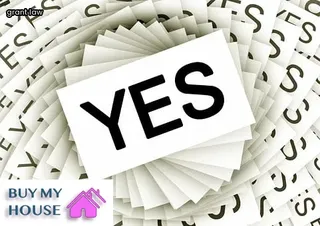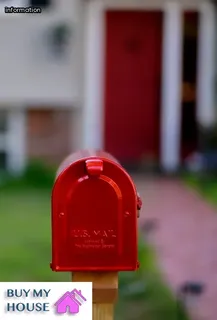Understanding Minnesota Quitclaim Deeds is an important step for anyone looking to transfer ownership of their real estate property. A quitclaim deed is a legal document used in Minnesota to transfer title from one party to another without any warranties or guarantees about the state of the title.
To complete a Minnesota Quit Claim Deed, the grantor (the party transferring ownership) must sign and date the deed in front of a Notary Public and provide a legal description of the property being transferred. The grantee (the party receiving ownership) must also be named on the deed and listed as an owner on the county tax assessor’s records.
Once completed, the deed must be filed with the County Recorder or Registrar of Titles office where it can be accessed by anyone researching your title. It is important to note that when filing a quitclaim deed, you may need additional documents such as mortgage releases or corrective deeds depending on your situation.
Ultimately, understanding how to complete a Minnesota Quit Claim Deed properly is essential for ensuring your house or real estate property transfers successfully.

In Minnesota, there are several different types of deeds which can be used to transfer property. The most common is the Warranty Deed, which provides the buyer with a guarantee that the seller holds title to the real estate and that there are no other claims on it.
Another type of deed is the Quit Claim Deed, which transfers title from one party to another without providing any warranty or protection for either party. A third type is known as a Special Warranty Deed in which the seller guarantees that he has not done anything to encumber the title, but does not provide any assurance as to prior events.
Finally, an Executory Contract is an agreement between two parties that creates a binding contract for future performance. Each type of deed has specific requirements which must be met in order for it to be legally enforceable in Minnesota; this includes completing all necessary paperwork correctly and filing it with the county recorder's office.
Understanding these different types of deeds and their requirements is essential when looking to complete a Minnesota Quit Claim Deed for your house or real estate property.
Completing a Minnesota Quit Claim Deed is an important step for transferring ownership of real estate property. The deed must meet certain legal requirements in order to be valid and accepted by the state.
It is essential to understand all the information needed when filling out and signing the deed, as well as the potential risks involved with this type of transfer. Your Quit Claim Deed should include the grantor and grantee's name, address and contact information; a description of the property being transferred; the legal description of said property; any restrictions or encumbrances that may apply to it; the consideration (the amount being paid for it); signatures from all parties involved in the transaction; witnesses (if applicable); and notarization.
Before signing, make sure you review your document carefully to ensure that all required information has been included accurately, including spelling and grammar. Additionally, speak with an attorney if you are unsure about how to fill out or file your Minnesota Quit Claim Deed.

When it comes to title insurance and its implications for Minnesota quitclaims, there are several factors to consider. Understanding the importance of title insurance and its role in protecting a property owner’s interests is key to completing a successful quit claim deed transaction.
Title insurance offers protection against liens, encumbrances, and other legal claims that could affect the transfer of ownership in a real estate property. In order for title insurance to be effective, it must be purchased prior to closing on the property and include coverage for both the buyer and seller.
The cost of title insurance depends on the size of the transaction and can vary depending on the type of policy purchased. When purchasing a Minnesota quit claim deed, it is important to obtain title insurance in order to protect both parties involved in the transaction.
Additionally, buyers should also consult with their lawyer or real estate agent to make sure all aspects of the sale are properly documented and executed according to state law.
A quitclaim deed is an important and useful tool for estate planning. It allows a transfer of title from one person to another without making any warranties or guarantees about the title being transferred.
In Minnesota, it is necessary to complete a quitclaim deed in order to transfer ownership of a house or real estate property. When completing a quitclaim deed, it is important to understand the role that it plays in estate planning and how it can create legal documents that are binding and enforceable.
A quitclaim deed should include all relevant information regarding the transfer such as the names of the grantor and grantee, the address of the property, legal description of the property, and any other pertinent details associated with the transaction. Additionally, all parties must sign off on the completed deed in order for it to be considered valid and binding.
A properly executed quitclaim deed can be used for transferring ownership of a home or real estate property in Minnesota, ensuring that all parties involved are legally protected in their transactions.

Minnesota quitclaim forms are widely used in real estate transactions, providing an effective way to transfer ownership or title of a house or property between parties. The form is commonly used when transferring title between family members, such as to children from parents or between spouses during a divorce.
Quitclaim deeds are also frequently used when an owner is selling a property and the buyer wants to be sure that they receive clear title and full ownership rights. In these cases, the seller must sign over complete ownership to the buyer with a quitclaim deed and have it recorded in the county records office.
A Minnesota Quit Claim Deed is also very helpful when one person owns a piece of real estate but wishes to add another person as joint owner, such as for married couples. The quit claim deed makes it possible for two people to hold title together on the same deed.
Generally speaking, completing a Minnesota Quit Claim Deed is easy and straightforward, provided you have all of the necessary documents ready and willing parties who are signing without being coerced in any way.
Creating a legally binding Minnesota Quitclaim Deed for your house or real estate property is an important step in the process of transferring ownership. Before beginning, make sure to gather all of the necessary information about the property and both parties involved in the transfer.
This will include the legal description of the property, the names and addresses of both parties, and the date that the deed is being transferred. When creating a quitclaim deed, it is important to use language that clearly identifies who is granting and receiving rights to the real estate.
It should also be noted in the document that it is being recorded with local authorities. Once all of this information has been collected and verified, it can be used to create an accurate quitclaim deed document.
After completion, all parties must sign as witnesses before submitting the signed document to local authorities for recording. Following these steps will ensure a legally binding Minnesota Quitclaim Deed has been created successfully.

In Minnesota, a quitclaim document must follow certain state guidelines in order to be considered valid. It must include the full names of all parties involved, a clear description of the property being transferred, and an acknowledgement that no warranties are made concerning the title.
The notary public witnessing the deed must also affix their signature and seal. In addition, if any of the parties executing the quitclaim are married, they must sign as husband and wife unless they are legally separated or divorced; otherwise, their spouses' signatures will also be required.
Furthermore, if there is more than one grantor or grantee listed on the quitclaim, each person must sign individually. Lastly, property tax payment receipts for all years in question should accompany a Minnesota Quit Claim Deed to avoid potential legal problems in the future.
Adherence to these conditions is necessary for the document to be accepted as valid by state authorities.
Filing a Minnesota Quitclaim Deed can be a simple process for transferring your property ownership rights. The first step is to write the document, which will require you to provide information about yourself and the other parties involved in the transaction.
Make sure to include all relevant details, such as full names, addresses, and a description of the real estate property being transferred. You can use a Fillable Quit Claim Deed document provided by the state of Minnesota as a template or get help from an attorney if you need assistance in completing the deed correctly.
Once completed, sign the document in front of two witnesses and have them sign too. Then file the deed with your local county court office or register of deeds office.
Make sure to include all necessary paperwork and applicable fees when submitting your documents for filing. Following these steps will ensure that you complete a Minnesota Quitclaim Deed for your house or real estate property quickly and accurately.

Completing a Minnesota Quit Claim Deed for your house or real estate property can be a tricky and time-consuming process. Fortunately, there are many free resources available to help guide you through the process and provide sample documents to use as a reference.
For example, the Minnesota Department of Commerce provides an online guide detailing the steps you need to take to complete a Quit Claim Deed in Minnesota. Additionally, it provides helpful instructions on how to properly record the deed with the county recorder’s office after it has been completed and signed.
You can also find sample forms from several government websites such as Nolo, or from local law firms that specialize in real estate law. These forms will provide you with an idea of what information is needed in order to properly execute a quit claim deed in Minnesota.
Finally, there are numerous online forums where experienced professionals are willing to offer advice and answer questions about completing Quit Claim Deeds in Minnesota. With these resources at your disposal, you will have the necessary knowledge and tools required to successfully complete a quit claim deed for your house or other real estate property in Minnesota.
Preparing a Minnesota Quit Claim Deed is an important step in transferring the ownership of real estate property. To ensure that the property is transferred properly and legally, it is essential to accurately identify the property location.
The property location can be identified by obtaining the address of the property along with its parcel number from local records or by physical inspection if necessary. It is also important to obtain a legal description of the property from official records that outlines boundaries and other pertinent information related to the land being transferred.
After obtaining this information, it should be included in the Quit Claim Deed when preparing it. Additionally, having a current survey of the land can help verify the accuracy of this information and make sure that all relevant details are correctly included on the document.

Completing a Minnesota Quit Claim Deed for your house or real estate property requires several key elements. To ensure the deed is legally binding and accepted by the county, you must include all of the necessary information.
This includes the names of all parties involved in the transfer as well as their addresses, legal description of the property, signatures of all individuals listed on the deed and notarization of these signatures. Additionally, it's important to make sure you include any related documents that may be required to complete the filing process such as a survey or title search report.
Once you have included all of these elements, you can submit your Minnesota Quit Claim Deed with confidence knowing that it meets all legal requirements and is legally binding when accepted by the county.
When creating or using a Minnesota Quit Claim Deed, there are other considerations to be aware of. It is important to make sure that all parties involved in the transaction are aware of the document’s contents and understand the implications of signing it.
The document needs to be clear and concise, with all relevant information clearly stated. Additionally, it should be signed in front of a notary public who will witness the signatures of all the parties involved.
The property should also be inspected before signing, to ensure that any potential issues that could affect its value have been revealed. Furthermore, it is also essential to check for any existing liens on the property that may need to be addressed prior to completing the quit claim deed.
Lastly, it is important to realize that submitting this document does not guarantee that title will be transferred from one party to another - rather, it serves as evidence of an agreement between two individuals or entities.

If you are looking to complete a Minnesota Quit Claim Deed with regards to a house or real estate property, finding the right legal help and information can be vital. Consulting with an attorney or other legal professional can ensure that all forms and filing requirements are met before the deed is completed.
An experienced lawyer will have knowledge of the required documents and necessary steps for transferring ownership of the property. Additionally, they will be able to answer any questions about the process, such as how to fill out paperwork correctly.
They may also be able to provide advice on preparing for court proceedings or any other related matters. Furthermore, a qualified attorney can review any contracts associated with the transfer of ownership and provide counsel on potential issues that could arise from completing the deed.
Finding reliable legal assistance is essential for completing a Minnesota Quit Claim Deed properly and efficiently for your house or real estate property.
When it comes to estate planning and title insurance issues, professional assistance is needed in order to ensure that a Minnesota Quit Claim Deed for your house or real estate property is properly completed. Working with an experienced attorney can help you understand the legal requirements of a quit claim deed and what documents need to be included.
An expert lawyer can also provide advice on how best to protect your interests when transferring ownership of the property, as well as explain any potential risks associated with the transfer. Additionally, they can help you navigate the process of obtaining title insurance, which will cover any claims made by previous owners of the property or other parties involved in the transaction.
With their help, you will have peace of mind knowing that your home or real estate asset is secure and protected.

Understanding the advantages and disadvantages of using Minnesota Quitclaims is essential when completing a deed for your house or real estate property. Utilizing a Quitclaim deed in Minnesota provides added assurance that the title to the property is transferred without any warranties of ownership included in the transfer.
This means there is no guarantee that all liens, mortgages and other encumbrances on the property have been identified and released prior to transfer. While this provides added security for buyers, it also increases their risk if they did not take appropriate measures to ensure all debts were paid off before transferring the deed.
Sellers should also be aware that Minnesota Quitclaims do not provide them with any protection once the deed has been transferred, as they are no longer legally responsible for any existing debts or mortgage obligations on the property. Furthermore, they may be liable if it is later determined that they knowingly transferred a defective title or failed to disclose information about issues with the title at time of sale.
Understanding these potential risks can help you make an informed decision about whether or not to use Minnesota Quitclaims when transferring your house or real estate property.
When considering the best way to complete a Minnesota Quit Claim Deed for your house or real estate property, you have many options. A MN Quick Claim is a popular option as it is quick and easy to fill out.
This type of document transfers ownership of the house or property from one person to another while releasing any claims on the property by the seller. However, other documents may be better suited for your specific situation such as a Warranty Deed which guarantees that the seller actually owns the title to the house and has not sold it before.
Other documents such as Special Warranty Deeds can also provide additional protections depending on what type of transaction you are completing. Before deciding on using a Minnesota Quit Claim, it’s important to weigh all of your options and understand what each type of document offers so that you can choose the best one for your needs.

Completing a Minnesota Quit Claim Deed for your house or real estate property is an important legal document that requires accuracy and attention to detail. There are several guidelines to follow in order to ensure that your Minnesota Quick Claim is enforceable.
Firstly, the deed should be written in accordance with the laws of the state of Minnesota and it must be signed by all parties involved in the transaction. Additionally, all sections of the deed must be filled out completely and accurately, including providing details about the parties involved such as their names, addresses, and contact information.
Furthermore, any documents pertaining to the transfer of ownership should also be accurately notarized with a licensed notary public. Lastly, make sure you provide a proper description of the property being transferred as well as any other pertinent information such as its address or parcel number.
Taking these steps will help ensure that your Minnesota Quick Claim is legally enforceable when completed properly.
Completing a Minnesota Quit Claim Deed is a simple way to transfer ownership of a house or other real estate property in the state of Minnesota. It is an effective tool for transferring title to the property from one party to another quickly and easily.
To execute a quick claim on your house in MN correctly, it is important to familiarize yourself with the process first. Begin by collecting all relevant information about the current owner and any potential new owner, including names, addresses, and Social Security numbers.
Once you have all of this information in hand, you can locate and fill out the correct forms from the local county courthouse or online. When completing these forms, be sure to include all pertinent details about both parties as well as specific details regarding the house or property in question.
You will also need to sign and notarize each form before submitting them for filing. After filing all necessary paperwork with your county’s office, you will receive confirmation that your deed has been successfully filed and that ownership has been officially transferred.
Completing a Minnesota Quit Claim Deed for your house or real estate property doesn't have to be expensive. The cost to do a quitclaim deed in Minnesota is minimal, generally ranging from $35 to $50 depending on the county recorder’s office.
In some cases, the cost can be even lower if you choose to prepare the documents yourself and file them without the help of an attorney. For example, in Hennepin County, filing fees for a quit claim deed are only about $26.
If you hire an attorney for assistance, there may be an additional fee. However, many people find that it is not necessary as long as they have all of their documents in order before submitting them to the county recorder's office.

Filing a Quitclaim Deed in Minnesota is an important step when transferring ownership of real estate property. In order to complete the process, you must first gather all of the necessary documents and information.
The primary document is the Minnesota Quit Claim Deed form, which can be obtained online or from your county's public records office. When filling out the form, be sure to include all of the relevant details such as the grantor and grantee names, legal description of the property, and consideration amount being paid.
After completing this form, it must be signed by both parties in front of a notary public or other qualified witness. Once this has been done, you then need to file the deed in your county recorder's office.
This will ensure that title to the property is transferred successfully. With proper preparation and knowledge of how to file a quit claim deed in Minnesota, you can quickly transfer ownership of your house or real estate property without any complications.
Adding someone to a deed in Minnesota is easy when you understand the process. To add someone to your real estate property, you need to complete a Minnesota Quit Claim Deed.
This document transfers ownership of the property and is typically used when someone wants to transfer their interest in real estate without providing a warranty or guarantee. It's important to fill out the quit claim deed correctly in order for it to be legally binding.
First, you should make sure that all parties involved are listed on the document as grantors or grantees. Next, provide basic information about the property such as its address, legal description, and county where it's located.
You'll then need to sign and notarize the document and file it with your Minnesota county recorder's office. Once it's approved, you will have completed your quit claim deed successfully; adding someone else to your deed in Minnesota!.
In Minnesota, a warranty deed must include the names of all parties involved in the transaction, a description of the real estate property being conveyed and consideration for the deed. The law requires that all signatures be notarized in order for the document to be legally valid.
Furthermore, when completing a quit claim deed in Minnesota, it is important to include the following information: grantor's name and address; grantee's name and address; legal description of property being transferred; signature of grantor; signature of grantee; date of signing; name and address of notary public who notarized document. In addition, it is recommended that an acknowledgment by an attorney or title company should be included with the quit claim deed as additional proof of ownership.
Finally, it is necessary to file the deed with your county recorder’s office in order to complete the process. By ensuring these requirements are met, you can complete a Minnesota Quit Claim Deed for your house or real estate property.